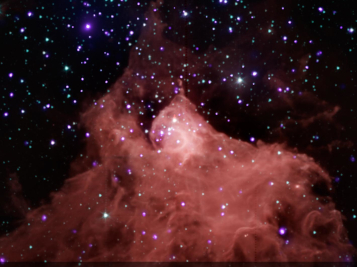- Series:Astronomy, Transcript English
I Corinthians 15:40-41
“There are also celestial bodies, and bodies terrestrial: but the glory of the celestial is one, and the glory of the terrestrial is another. There is one glory of the sun, and another glory of the moon, and another glory of the stars: for one star differeth from another star in glory.”
 “Around 12 billion years ago, the universe emerged from a great cosmic dark age as the first stars and galaxies lit up.” This is not the start of a sci-fi or fantasy novel, but of a scientific report on attempts to discover an early event in Big Bang cosmology. At the time of writing, deep-time cosmologists believe that the universe came into existence 13.7 billion years ago – but watch this space! This figure is subject to change. Then, they have to believe that stars began to light up at another point in time, which they refer to as the “Epoch of Reionization” or EoR. This cosmic switch on, they believe, must have left a faint signal. So they calibrated their detection equipment – Australia’s Murchison Widefield Array (MWA) radio telescope – to detect signals fainter than anything previously detected.
“Around 12 billion years ago, the universe emerged from a great cosmic dark age as the first stars and galaxies lit up.” This is not the start of a sci-fi or fantasy novel, but of a scientific report on attempts to discover an early event in Big Bang cosmology. At the time of writing, deep-time cosmologists believe that the universe came into existence 13.7 billion years ago – but watch this space! This figure is subject to change. Then, they have to believe that stars began to light up at another point in time, which they refer to as the “Epoch of Reionization” or EoR. This cosmic switch on, they believe, must have left a faint signal. So they calibrated their detection equipment – Australia’s Murchison Widefield Array (MWA) radio telescope – to detect signals fainter than anything previously detected.
One scientist remarked, “We can say with confidence that if the neutral hydrogen signal was any stronger than the limit we set in the paper, then the telescope would have detected it.” This is an odd way to describe their methodology.
“Scientists are now closer than ever to detecting the ultra-faint signature of this turning point in cosmic history,” the article explains. The signal is elusive because they have discounted anything currently observed.
One will note that these scientists have already assumed their conclusion and wish to find data that supports their existing conclusion. Even without a scientific qualification, listeners should notice that this is the wrong way around for doing science.
Prayer: We are constantly reminded, as we look at Your universe, Lord God, of Your great and wonderful care for us. Amen.
Author: Paul F. Taylor
Ref: Brown University. “Scientists inch closer than ever to signal from cosmic dawn.” ScienceDaily, 26 November 2019. <www.sciencedaily.com/releases/2019/11/191126121134.htm>. Image: Cepheus B, Public Domain.
© 2021 Creation Moments. All rights reserved.
